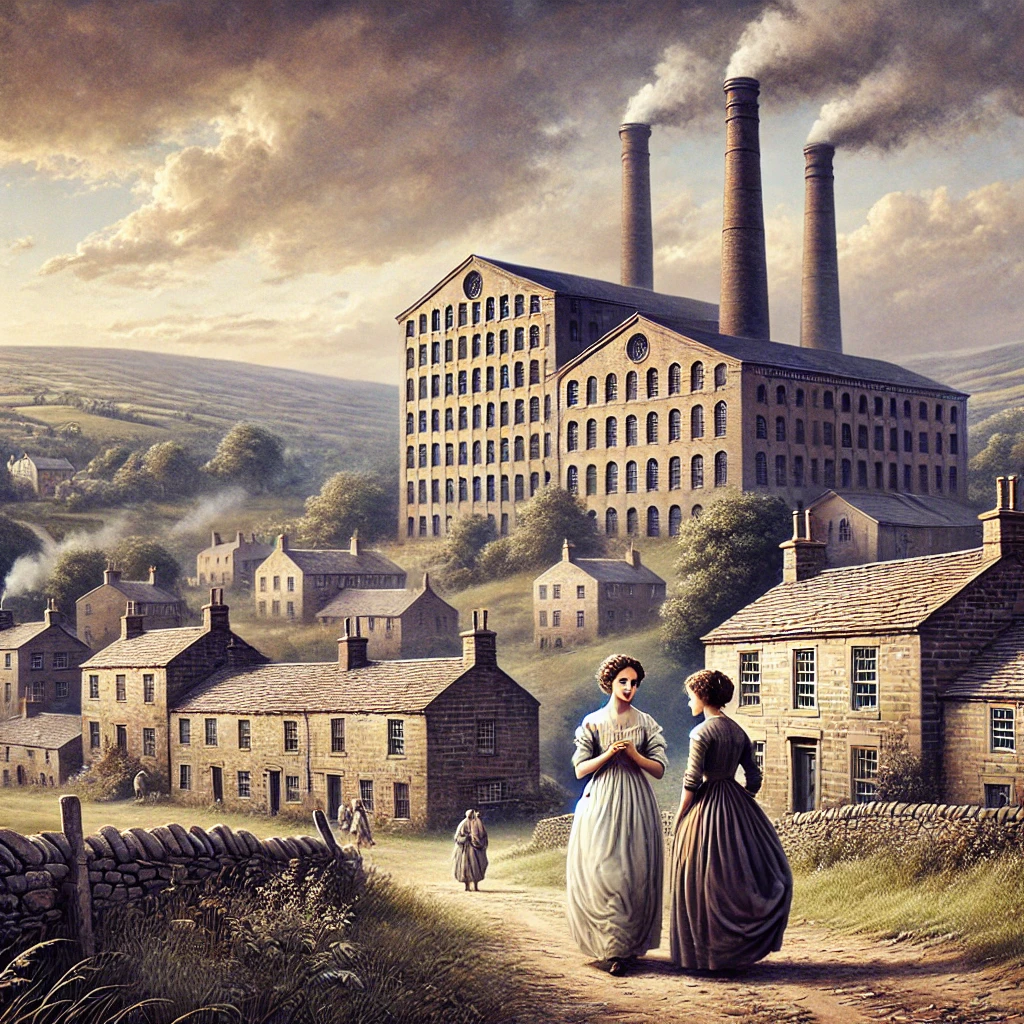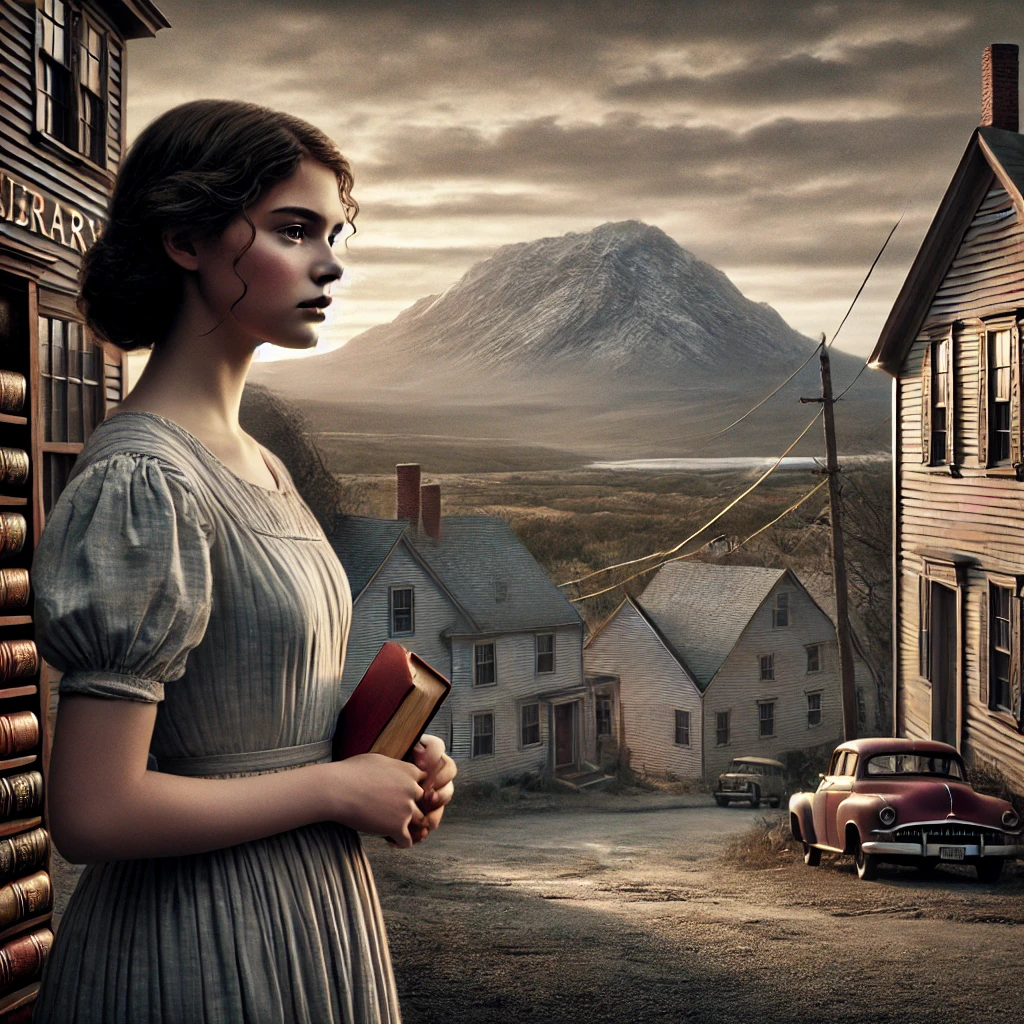Rainbow Valley, published in 1919, is the seventh book in the “Anne of Green Gables” series by Lucy Maud Montgomery. This story departs from Anne Shirley Blythe’s earlier tales and delves into the lives of her children and their new friends, particularly focusing on the youthful adventures and bonds formed in the Blythe family’s beloved Rainbow Valley. The novel’s picturesque setting and Montgomery’s timeless prose make it both a nostalgic exploration of childhood and an astute social commentary on community and acceptance.
Plot Summary
On a fresh spring evening, Four Winds Harbour sparkles under the apple-green sky. At Ingleside, Anne Blythe watches her children rush out to Rainbow Valley, an enchanting corner of woods and meadows where birds and laughter fill the air. Anne, now a mother of six, loves that her children share the same spirited dreams she once held. In Rainbow Valley, her children—Jem, Walter, Nan, Di, Shirley, and young Rilla—revel in freedom and adventure, where each tree and hollow feels like a secret shared only between them.
Life in Glen St. Mary has been routine until the arrival of a new minister, John Meredith, with his four children. A widower, Mr. Meredith is a man of books and thoughts, often losing himself in his study. Without a mother to guide them, the Meredith children run wild, finding delight in the simplest things, yet living with few comforts. Jerry, the eldest, has an adventurous spirit; Faith is a tomboy with bright eyes and a stubborn heart; Una, quiet and sensitive, longs for order and kindness; and Carl is a budding naturalist who brings frogs and insects home as companions. Their home, the manse, is in stark contrast to Ingleside, as their aged housekeeper, Aunt Martha, struggles to keep things in order. Without warm meals or tidy rooms, the Meredith children fend for themselves, stirring both sympathy and judgment among the town’s people, who believe a minister’s children should be better behaved.
The Blythe and Meredith children meet by chance in Rainbow Valley one evening, united by a shared love for exploration and a quick camaraderie. Their friendship forms almost effortlessly. They find in each other a safe and boundless world where class and expectations mean nothing. Through long summer days and starlit evenings, the children spin their adventures and mischiefs, laughing and whispering plans that feel like magic. However, the Meredith children’s independent ways do not go unnoticed by the Glen community, where whispers rise about their unruly ways and their father’s apparent neglect.
One day, a scrappy girl named Mary Vance stumbles into Rainbow Valley. An orphan with a sharp wit and an unpolished mouth, Mary has run away from her cruel foster home. She is frail from hunger, dressed in ragged clothes, and unsure of where to go next. The Blythe and Meredith children, horrified by her plight, decide to hide her. Faith, touched by Mary’s misfortune, convinces her siblings to take Mary into their already chaotic home at the manse. Mary soon wins over even the Blythe family with her boldness and endless tales, despite her tendency to say exactly what she thinks. The Blythe children, having grown up with love and laughter, become captivated by Mary’s resilience and untamed spirit. The children’s bond with Mary grows, each child learning in small ways to appreciate differences in family and background.
The children’s many escapades in Rainbow Valley are laced with small trials and discoveries. When a rabid dog enters the valley, Faith’s bravery shines as she faces it alone to protect the younger children. Meanwhile, Una’s longing for normalcy is realized when Mrs. Blythe takes an interest in teaching her household tasks and manners, something Una cherishes. Yet the growing influence of the Blythes does not go unnoticed in Glen St. Mary, especially as gossip spreads about Reverend Meredith’s children lacking proper discipline. The church elders become increasingly vocal about their disapproval, pressing Mr. Meredith to find a solution.
Mr. Meredith, though kind and intelligent, is often too lost in his own thoughts to fully understand the town’s concern over his children’s wild ways. After the church council threatens to remove him, Mr. Meredith finds himself pressured to remarry for the sake of propriety and his children’s well-being. Yet the idea of remarriage is distant to him, his late wife’s memory strong. While he struggles between his children’s happiness and the council’s demands, another figure enters the scene—Rosemary West, a gentle woman with a tragic past, who has chosen to live a solitary life with her sharp-tongued sister Ellen. Rosemary captures Mr. Meredith’s heart, though she hesitates at the thought of marriage, held back by her loyalty to her sister. Meanwhile, the children sense this stirring affection and begin dreaming of a future where Rosemary might fill their mother’s place.
The Blythes and Merediths continue to draw close, finding strength in their friendship even as outside pressures build. Mary Vance, who has slowly found stability in the Meredith home, begins to see a future she never dared imagine, no longer only the orphan girl of Glen St. Mary. The summer days come and go, and as autumn sets in, the little group faces a new challenge. Mr. Meredith, inspired by his children’s devotion, takes a stand against the council’s interference, declaring that his family’s happiness must come before public opinion. This resolve, however, does not entirely ease the burden on the children, who still feel the weight of the town’s judgments.
Rosemary West, moved by the children’s situation and Mr. Meredith’s quiet strength, finally agrees to marry him, realizing she is ready to accept love into her life, even if it means leaving her sister. The marriage brings a long-awaited sense of peace and belonging to the Meredith family. With Rosemary’s warmth and steady guidance, the Meredith children begin to flourish, learning that they no longer need to carry their burdens alone.
Winter blankets Glen St. Mary, but even in the stillness, Rainbow Valley remains alive in the children’s hearts, a reminder of their shared adventures and unbreakable bonds. The Merediths and Blythes continue to meet there, finding solace in the friendships they have made. Through each misstep and lesson, they have come to understand the value of family—both the one they are born into and the one they choose. With Rosemary at their side, the Meredith children find a stability they have never known, yet their lively spirits and love for adventure remain unchanged. Their laughter echoes across Rainbow Valley, a testament to the resilience and beauty that grows when love and friendship are sown into the hearts of children.
Main Characters
- Anne Shirley Blythe: Now a mother of six and the wife of Dr. Gilbert Blythe, Anne remains youthful in spirit and imaginative, grounding her family with love and humor.
- Dr. Gilbert Blythe: Anne’s devoted husband, a physician, who remains busy with his medical duties and community work.
- Jem Blythe: Anne’s eldest son, brave and dependable, embodies a blend of Anne’s curiosity and Gilbert’s steady nature.
- Walter Blythe: Sensitive and poetic, Walter has a vivid imagination and feels deeply, often retreating to Rainbow Valley as a haven.
- Faith Meredith: The lively and high-spirited daughter of the new minister, Faith challenges social expectations, making her a fascinating, though sometimes controversial, figure.
- Una Meredith: Gentle and introspective, Faith’s sister Una longs for a conventional family structure and stability in her life.
- Mary Vance: A vibrant, outspoken orphan with a troubled past, Mary becomes an unlikely friend to the Blythes and Merediths, though her tough exterior hides her vulnerabilities.
Theme
- Childhood Innocence and Exploration: Rainbow Valley is a sanctuary where the Blythe and Meredith children can freely explore their imaginations and form friendships, embodying the purity of childhood.
- Community and Social Judgment: Through the eyes of the children, the novel highlights the ways a small community evaluates behavior and family, particularly the scrutiny placed on Reverend Meredith’s parenting and Mary Vance’s social background.
- Faith and Spirituality: Reflecting Montgomery’s nuanced view of religion, the novel explores both the comfort of faith and the tensions between personal beliefs and public expectations in the community.
- Family and Belonging: The Blythes and Merediths each strive for unity and identity amidst their personal and social challenges, showing the enduring power of family, chosen or otherwise, in providing comfort and identity.
Writing Style and Tone
Montgomery’s writing in Rainbow Valley is rich with lyrical descriptions that evoke the beauty and tranquility of Prince Edward Island, blending nostalgia with vivid realism. Her language is warm and picturesque, especially in her portrayal of the natural setting of Rainbow Valley itself, which becomes almost a character in the novel. Montgomery uses humor and irony to capture the quirks and foibles of small-town life, where gossip and societal expectations often clash with individual freedoms.
The tone is reflective, with moments of gentle satire aimed at the norms and prejudices of early 20th-century rural Canada. Montgomery masterfully balances lighthearted scenes of youthful mischief with serious undertones, creating a compelling mix of whimsy and depth. This style allows her to address issues like poverty, loneliness, and resilience while maintaining a hopeful perspective, underscoring her faith in the redemptive power of friendship and compassion.
We hope this summary has sparked your interest and would appreciate you following Celsius 233 on social media:
There’s a treasure trove of other fascinating book summaries waiting for you. Check out our collection of stories that inspire, thrill, and provoke thought, just like this one by checking out the Book Shelf or the Library
Remember, while our summaries capture the essence, they can never replace the full experience of reading the book. If this summary intrigued you, consider diving into the complete story – buy the book and immerse yourself in the author’s original work.
If you want to request a book summary, click here.
When Saurabh is not working/watching football/reading books/traveling, you can reach him via Twitter/X, LinkedIn, or Threads
Restart reading!








